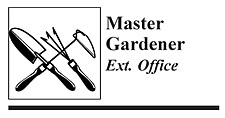October 19, 2006 at 7:07 a.m.
David Zlesak, Regional Extension Educator, wrote an article that may answer some of these questions.
As long as there has not been a freeze and there is green foliage to undergo photosynthesis, chances are there are still carbohydrates being generated and transported to the crown of the plant. Interfering with this process by removing stems and foliage will limit the amount of energy reserves the plant has going into winter and from which to fuel new growth the following spring. It is best to wait to remove top growth until it naturally dies back or at least after a hard freeze in order to allow as much energy reserve as possible to be generated and stored. Some perennials when cut prematurely in the growing season may try to re-grow from the base, especially if we have a long, warm fall. Such plants deplete stored energy reserves and may not survive the winter.
Marginal hardy plants such as mums and lavender have a better chance of surviving the winter if you leave their old growth alone until spring. Stems can act as small windbreaks to accumulate snow, blowing leaves, and other materials which can act to insulate the crown of the plant. In the U of M mum breeding program, led by Dr. Neil Anderson, winter survival of mums were compared with those having top growth cut back in the fall after a hard freeze versus leaving it through the winter. There was a clear trend that those with tip growth present throughout the winter were more likely to survive.
Another reason to leave top growth intact through the winter is the winter interest it provides. Many perennials have relativity strong canes that do not readily lodge and provide interesting architecture, fruiting structures, or seeds desirable as food to wildlife. Some perennials which provide good winter interest include many of the daisy or composite flowers such as purple cone flower and heliopsis. Also, most ornamental grasses and other sturdy plants with attractive fruit capsules such as Siberian iris.
For very hardy plants such as bee-balm, daylilies, hostas, and peonies, they are so durable that removing their foliage in the fall is generally no problem at all. In fact, removing foliage in the fall and carefully discarding it can help reduce disease pressure, the following season. Even for the more tender or marginal perennials where diseases have been an issue, removal of diseased tissue in the fall is a wise choice. Mulch can be brought in to help insulate the most tender perennials.
Barring disease pressure, leaving the top growth on herbaceous perennials is the easiest way to manage herbaceous perennials and is what is recommended. Top growth can provide continued ornamental interest throughout the winter in itself and the wildlife it may attract. In addition, in the spring top growth of many perennials is more brittle and much easier to remove compared to the fall. Consider your particular perennials, winter garden preferences, and disease pressure to make the best choices for your situation.
+++++
The final class of the fall series “Caring for Holiday Plants” will be held at the Senior Center in North Branch at 6:30 p.m., Tuesday, Oct. 24.
Donna Tatting, Chisago County Mater Gardener, will talk about care of poinsettias, Christmas cactus, amaryllis and other plants that are great gifts to give and receive at the holidays. The question we most often receive is what do we do with them after the holidays? Learn how easy it can be to keep these plants healthy and blooming long after the holidays are over. We'll also learn a little about the legends and traditions of these holiday plants. Call the office at 674-4417 for more info.
+++++
If you would like to find out more about becoming a master gardener, please attend this class to find out what we do and get an application for the training to be held in Mora during February 2007.
+++++
You can leave a question for a volunteer Master Gardener at 651-674-4417, ext. 18. Depending on the volume of calls, they try to respond within a couple of days.You can also get your question answered on the web at: www.extension.umn.edu/askmg.





Comments:
Commenting has been disabled for this item.